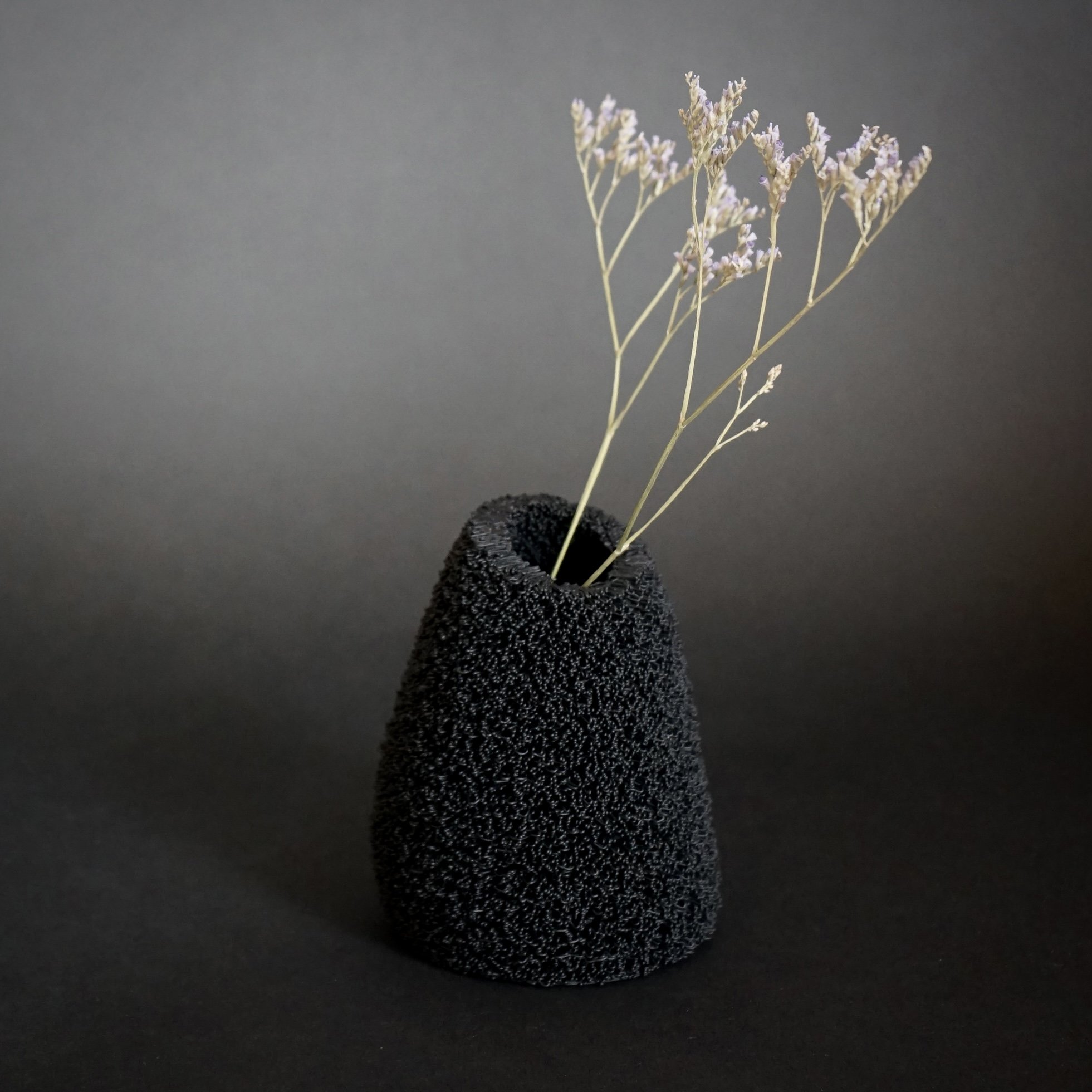Her Dark Materials
An exploration around craft, technology and darkness
Her Dark Materials is an ongoing exploration around texture and 3D printing. It plays with the limits of the printed material and our perception of it. This research is part of my study around the evolving relationship between craft and technology.
It is composed of a collection of 3D printed black vases made out of wood filament giving them a strong natural scent. On a more artistic level, these little shapes are also the crystallization of dark emotions and a true outlet for them. Their shapes and textures are instinctively inspired by Nature.
_
Material : PLA and recycled wood
Digital Craft
An interesting point of contention today is that traditional craftsmanship officials often don't recognize anything created with 3D printing as craft.
But what defines craft exactly? From what I've gathered: it involves small-scale production of high-value products, requiring specific knowledge and skills. And it's commonly associated with being made "by hand". And here lies the heart of the debate. The funny thing is that in 3D modelling, we do use the term 'made by hand' when we can't find ways to computerize the creation of a shape or pattern.
From my point of view, this debate is based on a generational gap. From the outside, 3D modelling looks like it's all easy and automated, but it is actually a very wide and diverse set of tools more or less advanced that can be used in multiple ways. Just like ceramics that you can form by hand or with a wheel, molds, machines, you have to work on your glaze and you're never entirely sure of the outcome until you've gone through numerous trials and errors.
To me, the importance of 'the hand' is not solely about direct contact with the material or touch but rather the skilled gesture, movement, and intention of the craftsmen; qualities that can also apply to 3D artists. It's also about the fact that, sometimes, the output takes on a life of its own and triggers inexplicable emotions.
In my case, my digital clay is molded with my control points, my glazing is done through my slicer software, and my oven is my 3D printer.
I do feel like a digital craftswoman!
Darkness
I’ve recently been really compelled to work with black especially to explore textures. Going through a rough patch, I found working with the complexity of black to be a good outlet.
“I've realized something really important about darkness on a new moon night. I was gazing outside my window, looking at this absorbing and pure black that feels completely out of control. My first reflex was to look away, out of fear. But this time, I kept looking. The intensity of this darkness quickly started to vanish revealing contours, shapes, and shadows. It felt like I had tamed it.
What I realized is that the darkness outside is exactly like the one inside: it feels scary and absorbing but if you just observe it for one second it will start to fade. You will tame it and realize it doesn't really exist.”
SHOP THE COLLECTION



















